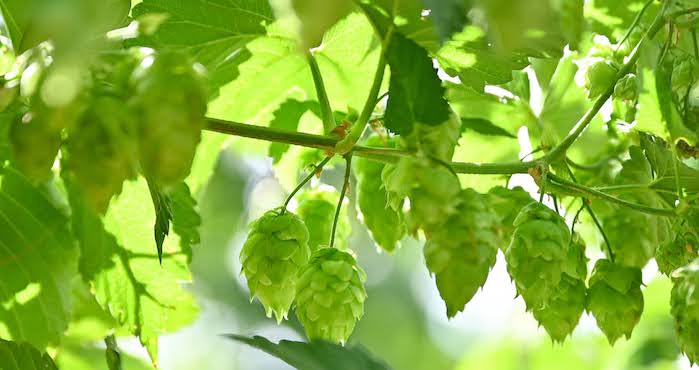Hop Science Newsletter (February 2015)
In this issue: where aroma hides, CA and MI hops, the roots of hops, and how to quantify hop aroma utilization.

WHERE THE AROMA HIDES IN HOPS AND OTHER FRUITS…
If it is about sulfur containing aroma compounds in hops, this research group is leading the way. Several of their projects in the past years focused on polyfunctional thiols in beers. In 2012 the team reported the evidence of S-cysteine conjugates. Now they have subjected 4 different hop varieties, Saaz (CZ), Tomahawk (US), Cascade (US) and Nelson Sauvin (NZ) to an enzyme treatment (a ß-lyase treatment, apotryptophanase) to see which free thiols would be detectable and to estimate the flavor potential of these hidden flavor compounds. Free thiols were then extracted and quantified by GC-PFPD. Polyfunctional thiols with sensory impact are known in the wine industry and were also identified in different fruits. Furthermore cysteine- and glutathione-Sconjugates have also been found in passion fruit juice, onions and bell peppers. The Cascade hop variety exhibited the highest potential, with 1641μg/kg of 3-Mercapto-hexan-1-ol (grapefruit) released. This value is 14 to 22 times the amount of free thiols previously found in this variety (73–117 μg/kg). By comparison, the treatment of Tomahawk, Nelson Sauvin and Saaz extracts released only 276, 261 and 316 μg/kg of this compound, respectively. Also the yield of other components were quite remarkable. Free the fruits in your hops with the help of enzymes!¹
IVANHOE, GARGOYLE AND MACKINAW; WHAT ARE THESE?
Though they sound…like a gang of three guys, these are three different hop varieties ! And they grow in locations you would never think: California and Michigan! Roughly 400 ha of hops are grown OUTSIDE of Washington, Oregon and Idaho (where about 16000 ha of hops grow). Growing hops is absolutely in vogue, but in regards to quality standards still a far way to go for many new hop growers. Following the top three states, the biggest growing areas are Michigan (147ha), New York (100ha), Wisconsin (49ha), Colorado (30ha) and California (26ha). I am sure these new growing areas will also bring us new hop flavours!²
NEVER UNDERESTIMATE THE ROOTS!
Our roots tell us who we are, why should it be different for hops? But actually what do we know about the roots of hops, the hidden half of the plant? These German researchers investigated the root development of different hop plants for a five year period producing a lot of valuable results. The root system of hop can be subdivided into three parts: A row section with adventitious roots, a disk surrounding the rootstock with horizontally growing roots and a block of vertical roots developing downwards. Both the horizontal and the vertical part are interspersed by two types of roots (perennial and fresh ones). The total amount of the rooted soil volume is about four cubic meters, which indicates a large potential capacity for available water. These findings may contribute to optimised hop cultivation with regard to irrigation, fertilisation and tillage.³
HOW TO QUANTIFY HOP AROMA UTILIZATION
I guess we all know that there is no easy way to quantify the hop oil utilization due to the complexity of the hop oil composition. However these Belgian researchers have developed a methodology to bring light into the darkness. With the combination of HSSPME and GC-MS plus SIM (selected fragment ion monitoring) they were able to determine selected markers for floral and spicy aromas selecting specific ions. Within their work they also discovered that a certain compound, trans-nerolidol, can be used as a marker in beers to measure flavor instability in beer. So if you have some money aside, why not invest in some decent analytical instruments?4
BARTH-HAAS GRANT
Hops research has made significant advancements in recent years and many of the mechanisms and applications in the use of hops are now being better understood. In the interest of promoting further research, the Barth-Haas Group each year confers five grants of 2000€ for hop research projects. Do you have any ideas ? Send me your application by May 31st 2015. More info here. http://www.barthhaasgroup.com/en/about-us/commitment/barth-haas-grants
HOP VARIETY OF THE MONTH: MONROE
Seductive as the eponym – Marylin Monroe – this hop exhibits raspberry and cherry flavours which can be subtle or dominant in your beer. With alpha values of only 2,5 % and oil content of 1,0ml/100g hops, this aroma variety is quite unique and not comparable to any other variety! More info here in German and English.



